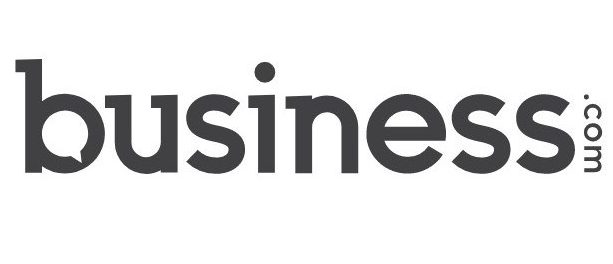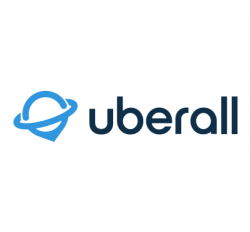Top Five Key Website Optimization Strategies for Your Law Firm
Date: February 1, 2024

With more than 425,280 law firms in the United States, your firm must stay competitive in the space. This means it is probably in your firm’s best interest to think about how you can optimize your website so you can have a prominent online presence. There are many strategies your law firm can implement in order to optimize your website. In this blog, we’ll discuss the top five website optimization strategies that your law firm should consider.
1. Content Optimization
One of the most critical aspects of a properly optimized website is content. You may have heard the saying “Content is King,” and that stands true even to this day, especially with the rise of AI and AI-generated content with the introduction of tools such as ChatGPT.
When it comes to writing the content on your website, the most important thing to remember is you’ll want to write content for humans by humans. Also, keep in mind Google’s guidelines around E.E.A.T (Experience, Expertise, Authoritativeness, Trustworthiness). When writing, be sure to emphasize those elements and show Google and your readers that you are the best possible source for whatever topic you may be writing about.
With that said, it’s also important to consider the focus keyword for your content as well as semantic keywords, or related terms, to include within the piece. Additionally, don’t forget to break up your content with relevant and optimized headings to make the content easier to read and skim through if needed.
2. Mobile Optimization
When developing your website, much emphasis is often placed on the desktop version of the site, and the mobile site is oftentimes neglected or placed on the backburner. If you want your website to perform to the best of its ability, it is important to take into consideration the mobile version of your website and ensure that it is optimized just as well as it is on the desktop version. This is critical due to Google moving to mobile-first indexing, so if you are neglecting the mobile version of your website, you are hurting your chances of ranking higher within search results– which means you’re potentially losing out on new clients.
To learn more about the optimization of the mobile version of your law firm’s website, check out our webinar on the topic here.
3. Optimizing Title and Meta Descriptions
There are few quick wins in SEO, as it’s a long-term strategy that can take some time to see lasting results. However, one of the easiest ways to see fast results is to optimize your title and meta descriptions. Start with your practice area pages and go from there. For example, if you are writing the title tag for the elder law practice page for your firm located in Nebraska, I would recommend making the title tag ‘Nebraska Elder Law Attorney’. When it comes to the meta description, it is best to keep it around 160 characters and try to have it include your focus keyword if possible.
Optimizing your title and meta descriptions can make a big difference– especially if it is something your competitors have not paid attention to.
4. Technical Optimizations
A website cannot be thoroughly optimized without being technically sound. Some key aspects of this include Core Web Vitals and page speed, which are two areas that help improve the user experience on your website.
Core Web Vitals
Core Web Vitals are a set of metrics that measure real-world user experience for loading performance, interactivity, and visual stability of the page. The three main Core Web Vital metrics used are as follows:
- Largest Contentful Paint (LCP) – Measures the time from when the user initiates loading the page until the largest image or text block is rendered within the viewport. This represents how quickly the main content of a web page is loaded
- First Input Delay (FID) – Measures how long it takes for a browser to respond to a user’s first interaction with a website.
- Please Note: Starting March 2024, Interaction to Next Paint (INP) will replace this Core Web Vital. INP is a metric that measures how quickly a web page responds to user interactions
- Cumulative Layout Shift (CLS) – Measures how much a webpage’s content shifts unexpectedly
With about 55% of websites failing Core Web Vitals, your firm can gain an advantage by ensuring your website is passing for both mobile and desktop.
Page Speed
Page speed measures how quickly your website loads. You can check your website’s Page speed with any of the following tools:
Having a website that loads quickly is not only beneficial from a technical standpoint but also for the overall user experience. In fact, 40% of people will wait no more than three seconds for a web page to render before abandoning the site. So, if your site is not loading quickly enough, you could be losing potential new clients.
Other Technical Optimizations
There are a handful of other technical optimizations you can make to ensure your website is running as efficiently as possible. Below are some other technical optimizations to keep in mind for your law firm’s website.
- Schema
- Accessibility
- Site Structure
- Find and Fix Broken Pages
5. Link Building
Link building, also known as backlinking, is an essential part of any SEO strategy. This involves getting links to your website placed on another that is seen in Google’s eyes as reputable. Backlinks can be acquired through a variety of ways including but not limited to:
- Guest Blogs
- Quotes
- Interviews
Having quality backlinks on high domain authority websites is critical to enhancing your website’s authority and showing Google that you are a trustworthy source. In turn, Google will reward you by ranking your pages higher in search results.
Receive Optimization Tips From the Law Firm SEO Experts at 9Sail
If you’re looking to grow your firm by acquiring new clients via your website, then look no further. The team at 9Sail is here to help you by creating and implementing successful long-term SEO strategies. If you’re ready to learn more about how we can help you and your firm, reach out!
















